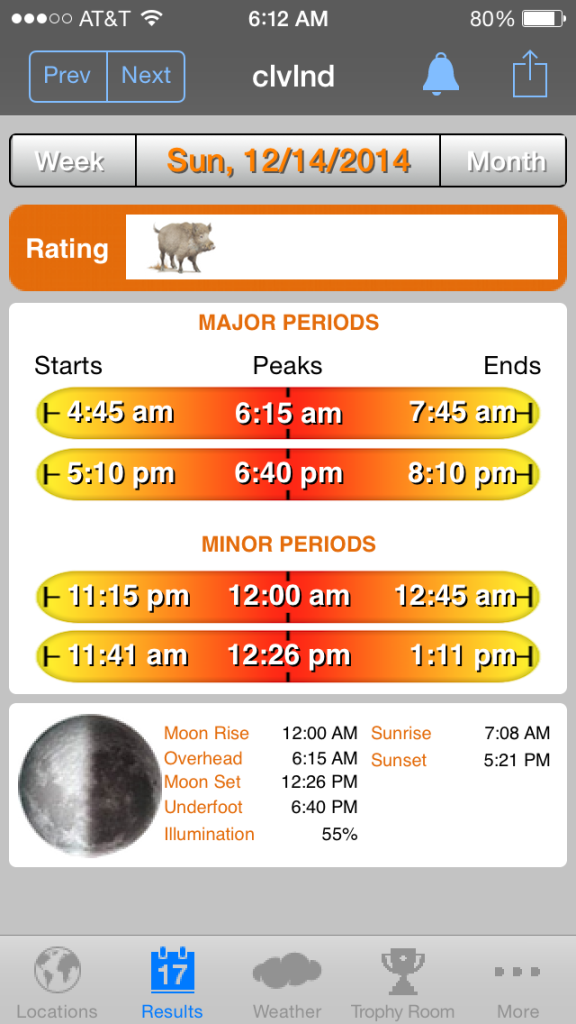theblakester
Got a black belt in keeping it real.
LSB TURKEY BUZZARD PRESERVATION SOCIETY
SUS VENATOR CLUB
LoneStarBoars Supporter
I've been using the "Isolunar" app now for a while to tell me how full the moon is going to be, and when it should rise and set each night.
It also has indicators that say which nights of the month are going to be the best overall. Basically, each month, the closer to full moon and new moon, the better the overall hunting/fishing should be.
Each night has a major and minor period (generally 3 hrs and 1.5 hrs respectively). "Peak" times occur in the middle of each period. These period/peak times predict the most game activity in a given night. Lately I've noticed that I'm seeing a lot more movement during the major and minor periods (even if it's only coons, rabbits etc) and more specifically/legitimately closer to the peak times.
In the past, I've heard that lunar predictions are pretty accurate. Just wondering if these major and minor periods and/or peak times each night have proven to be beneficial for others more often than not.


It also has indicators that say which nights of the month are going to be the best overall. Basically, each month, the closer to full moon and new moon, the better the overall hunting/fishing should be.
Each night has a major and minor period (generally 3 hrs and 1.5 hrs respectively). "Peak" times occur in the middle of each period. These period/peak times predict the most game activity in a given night. Lately I've noticed that I'm seeing a lot more movement during the major and minor periods (even if it's only coons, rabbits etc) and more specifically/legitimately closer to the peak times.
In the past, I've heard that lunar predictions are pretty accurate. Just wondering if these major and minor periods and/or peak times each night have proven to be beneficial for others more often than not.



